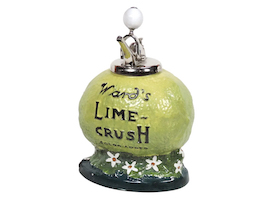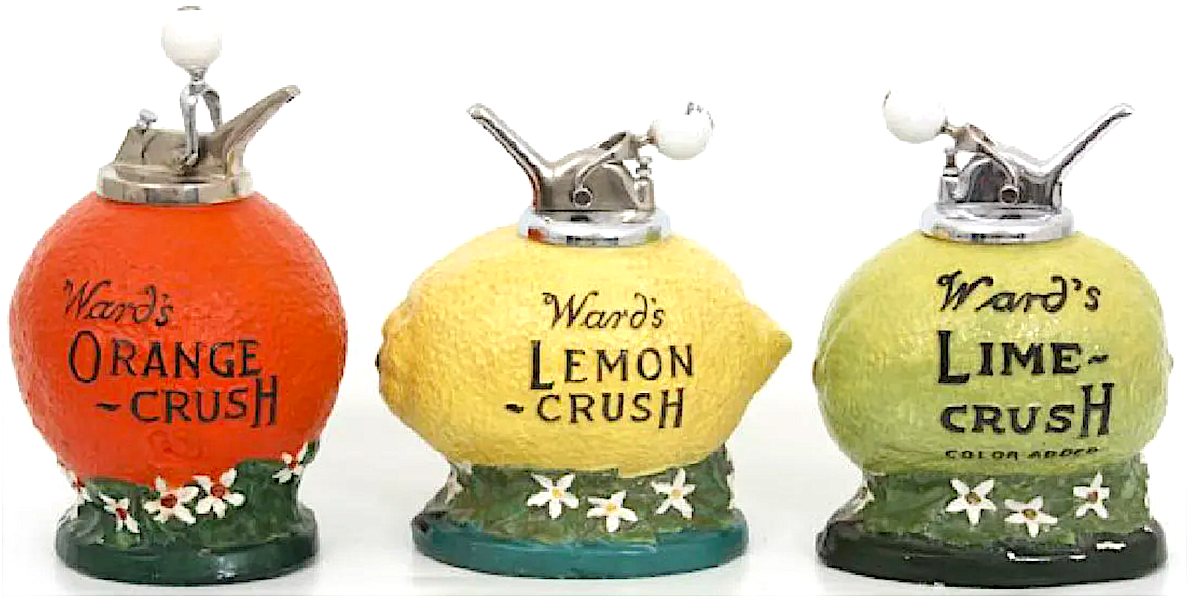
NEW YORK — Orange Crush has never been as big as Coca-Cola, but internationally, it is one of the biggest alternative soda brands. Its advertising holds great appeal for collectors and brings strong prices on the secondhand market.
While the success of Orange Crush is largely credited to California chemist Neil C. Ward, the recipe was actually created in 1906 by J.M. Thompson in Chicago. It only became a commercial hit after Ward spent four years tweaking the blending process, releasing his version of Orange Crush in 1911. In this era, the inventors — usually pharmacists or chemists who developed the soda recipe — were credited for their work by having their name added to the product. Early syrup dispensers are thus inscribed with the phrase Ward’s Orange Crush or Ward’s Lime Crush, depending on which product was being promoted.
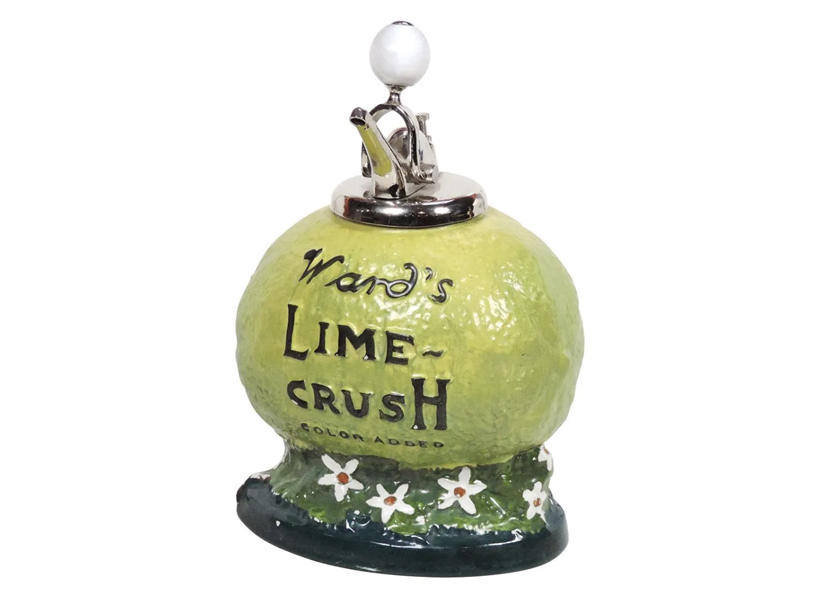
The dispensers, given pride of place on drugstore and soda fountain counters, are vibrantly colored and shaped to mimic their fruit of origin. A fine example is a circa-1920 syrup dispenser for Ward’s Lime-Crush, which earned $5,500 plus the buyer’s premium in November 2021 at Rich Penn Auctions. Orange Crush was always a bigger hit than Lime Crush, so fewer lime dispensers survive. Lime Crush is in fact still made, but it is only available in Canada. The dispenser sold at Rich Penn Auctions retained its fine original paint and the correct ball-style pump and stood 13½in tall. Also worthy of note is a trio of Ward’s Crush fountain syrup dispensers, one in orange, one in lemon and one in lime, which together sold for $2,250 plus the buyer’s premium in March 2017 at Fontaine’s Auction Gallery.
Brian Burke, soda and advertising specialist for Dan Morphy Auctions, based in Denver, Pennsylvania, said Orange Crush is probably the most desirable alternative soda as compared to major brands such as Coke or Pepsi. “It’s been around forever and they really focused on advertising as a huge international brand,” he said. “Lime is a much smaller offshoot, and they didn’t have near as much advertising. People look for it because they are Crush collectors, but there is not as much of it as there is of the Orange Crush.” Caffeine-free Crush beverages, now distributed by Keurig Dr Pepper, have come in a variety of flavors, including contemporary offerings such as pineapple, strawberry, grape, peach and watermelon.
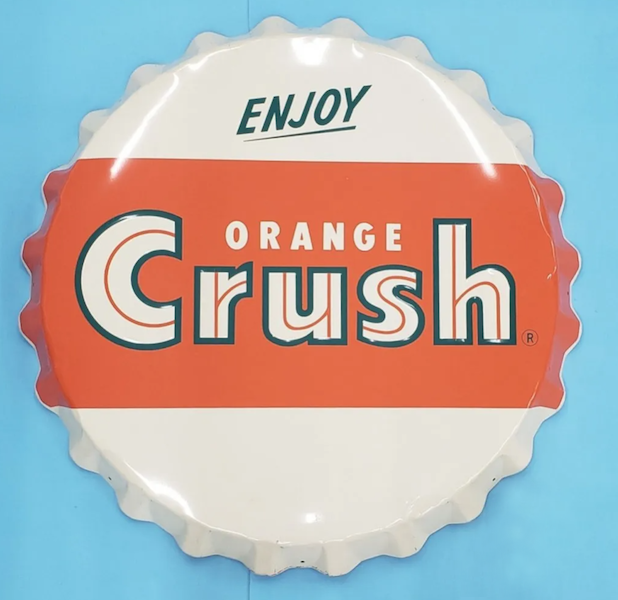
Orange Crush collectors have thousands of collectibles to choose from. “There is just so much advertising from the turn of the century on,” Burke said, adding that collectors avidly seek signs that have the Crushee mascot and bold graphics. Other early examples featured depictions of attractive women — often redheads, who were deemed especially fitting for marketing Orange Crush.
Serious collectors chase after the most interesting signs in the best possible condition. “It’s really become expensive to get a lot of these signs,” Burke said. When entry-level collectors enter the field, they often begin with more affordable signs from the 1960s-70s and then, as time passes, expand or upgrade their collection with earlier examples, he said.
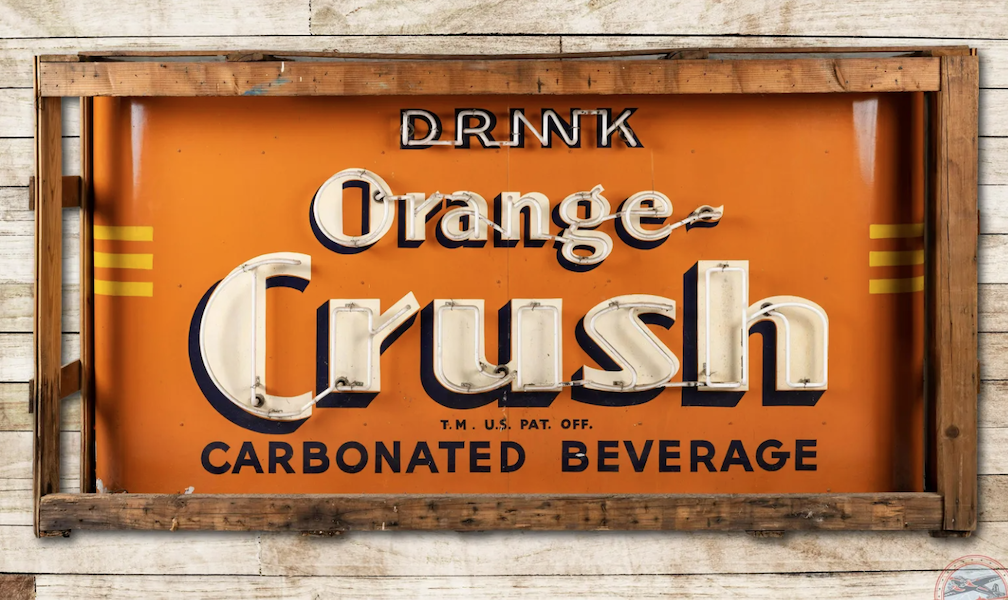
One sign that had great appeal was a like-new Drink Orange Crush sign with neon lettering, which attained a strong price of $165,000 plus the buyer’s premium in February 2023 at Richmond Auctions. “This is the only known example in the original shipping crate and is a holy grail neon for any soda collector,” according to the auctioneer’s description of this sign, which measures 49 by 95 by 10in. The single-sided tin sign retained excellent color and shine as it had only minor wear. The crate in which it was found indicates the sign was made in New York and shipped to an Orange Crush bottling plant in Wisconsin.
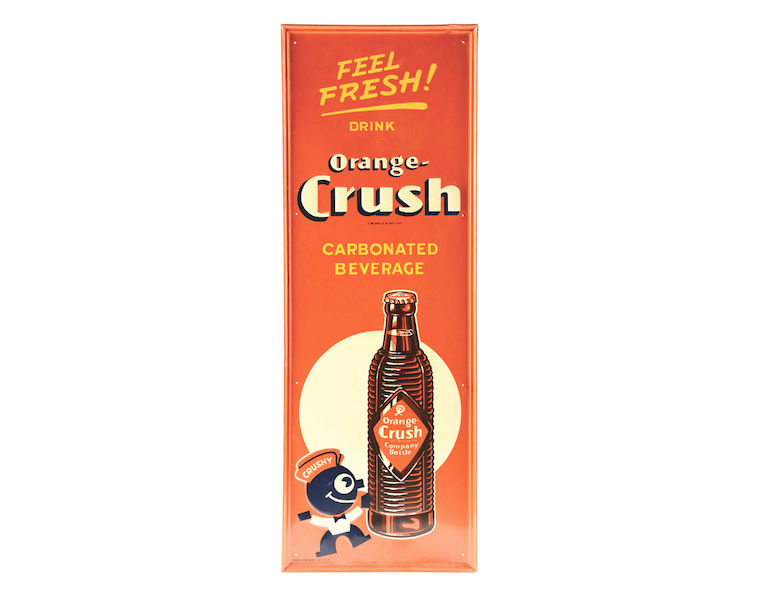
The black-and-white character Crushy was the brand’s mascot from the late 1920s into the 1940s. He appeared on signs and bottle labels and was sometimes shown squeezing an orange or riding a scooter. His look was distinctive, and he sports a deliberately orange-shape head. An embossed tin Orange Crush sign featuring the Crushy mascot realized $4,600 plus the buyer’s premium in August 2022 at Dan Morphy Auctions. Making this sign even more valuable is it pictures one of the early ribbed brown glass bottles, called “krinklies,” which were used up until the mid-1950s. “In soda, everybody likes the bottle images on the signs, that’s what brings the money,” Burke said.
Top-flight examples of signs have been holding steady around the $5,000 mark in recent years with the neon sign described above — likely a record price — being a notable exception. Signs in the form of bottle caps are popular, such as a large Enjoy Orange Crush sign measuring 39in that brought $5,250 plus the buyer’s premium in October 2021 at Rockabilly Auction Company.
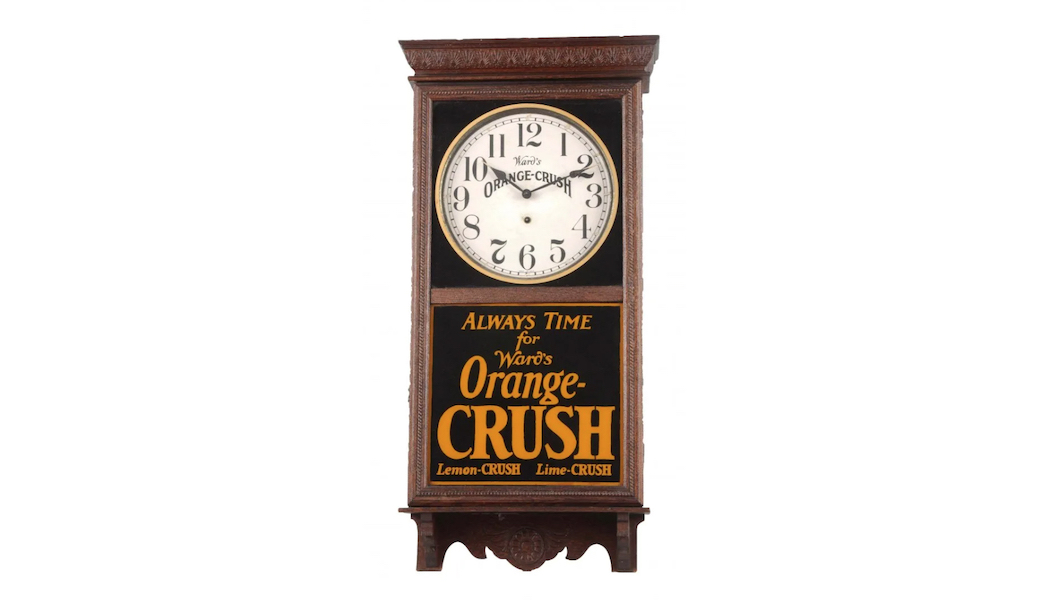
Early wall and mantel clocks are coveted Crush-related pieces as well. A Ward’s Orange Crush reverse glass advertising clock housed in an wooden case went for $3,250 plus the buyer’s premium in October 2016 at Dan Morphy Auctions.
Soda memorabilia collecting is a well-established niche in the advertising market and inspires much nostalgia. “Soda resonates with everybody, they remember it from when they were kids … and different regions have different sodas,” Burke said. “It [Crush] is very unique and when you add in how much they advertised, it’s the perfect storm for an advertising collector.”


